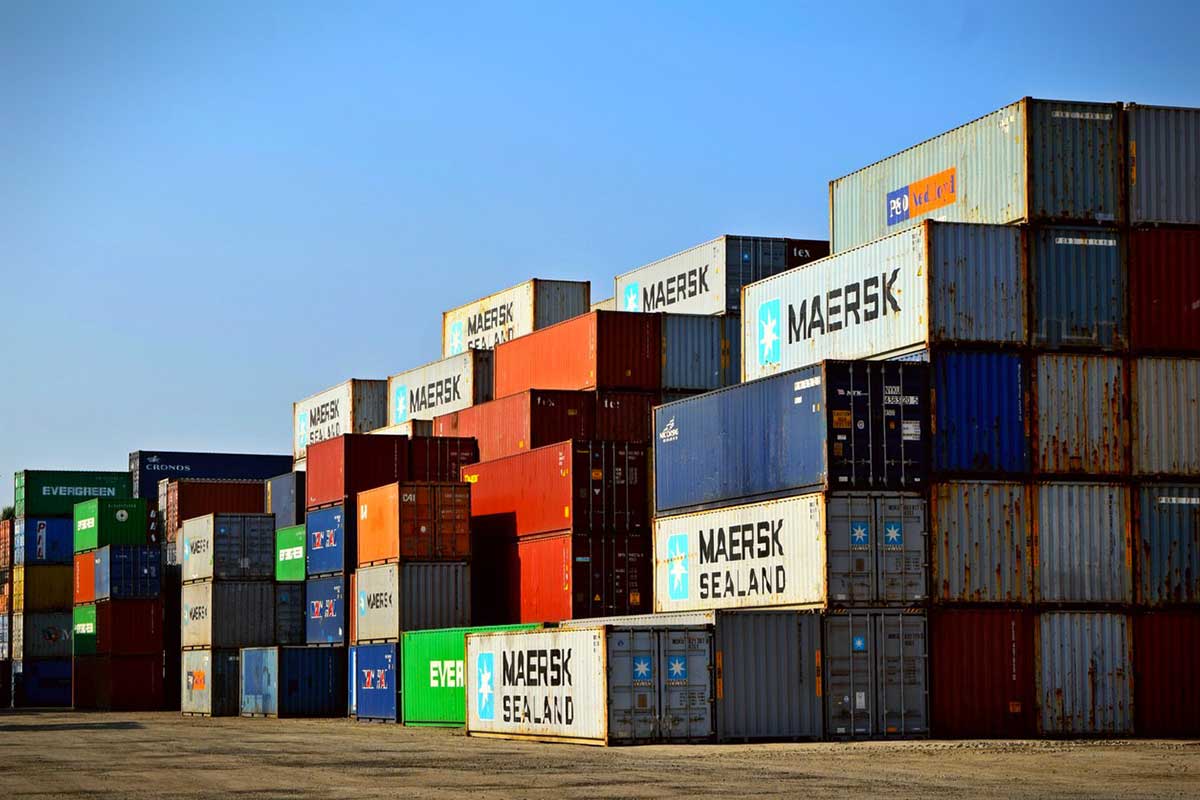The flow of goods in large urban areas is challenging the ecosystems. The key to cut out emissions and provide safer working conditions is global commitment
Definitions and services provided: logistics and supply chain management
Logistics and supply chain management are far-reaching activities that have a major impact on a society’s standard of living. In Western developed societies, we have come to expect excellent logistics services. We tend only to notice logistical and supply chain issues when there is a direct problem.
These services include activities that are not only often taken for granted, as they touch many facets of our daily lives, but have an impact on environmental sustainability. Before we dive into the consequences, we need to define what is meant by logistics and supply chain management in the first place.
Logistical activities typically include inbound and outbound transportation management, warehousing, materials handling, order fulfillment, network design, inventory, supply and demand planning, and management of third-party logistics service providers.
The latter is considering elements other than sourcing and procurement, production planning and scheduling, packaging and assembly, and customer service to varying degrees. Due to the rapid advances in technology, such as offering online shopping or other services that included fast procurement of things, the notion of point of consumption has been validated.
How globalization changed trends and affected sustainability
The globalization of the food industry, with increasing food trade and wider geographical sourcing of food, has led to a concentration of the food supply base into fewer, larger suppliers. This inversion of this trend happened for several reasons: to meet demand for a year-round uniform supply, major changes in delivery patterns to diffuse the use of larger heavy goods vehicles, and a change in habits from shopping at small local shops, to a concentration of sales at supermarkets through weekly shopping with cars.
Increases in environmental, social and economic impacts such as CO2 emissions, air pollution, traffic congestion, accidents and noise have led to a debate on whether to try to measure and reduce miles travelled by motor vehicles or compensate CO2 footprint.
In a study conducted in the UK on the impacts and costs of climate change, it is illustrated that the annual amount of food tons moved by heavy goods vehicles has increased by over 100 percent since 1974. Similarly, the average distance for each trip has increased by over fifty percent. The total amount of CO2 emissions, which includes transport – export, import and internal – counts for over nineteen million tonnes in 2002 with estimated direct costs of £9 billion, £5 billion of which related to traffic congestion.
Currently, green or environmental logistics and supply chain performance measurements are relatively under-researched areas of study. However, despite being a relevant and topical subject, the lack of clear direction and legislation on environmental management makes it difficult for firms to know exactly what and how to measure, whether it is miles, emissions or recycling.
More theoretical and empirical research needs to be undertaken to give firms and other stakeholders the tools to do so. Outsourcing can be very cost effective for firms, as they can efficiently concentrate on their core competencies, reduce capital expenditures and fixed assets related to transportation and storage infrastructure, reduce labour and internal operating costs, and enjoy the expertise and economies of scale provided.
The possibility of Zero Emission heavy vehicles
One area of expertise which could provide more incentive is the electric truck market. If on-road transportation can’t be stopped, decarbonization could be considered as the next best thing, a viable solution. While there have been reservations about the use of electric trucks, there has been a lot of noise about the potential for hydrogen-powered vehicles at the heavier end of the market. Tesla and other manufacturers have taken small steps into this market.
Although there is a struggle to be cost-competitive with diesel, the targeting concept is that the heavier the vehicle is, the more the saving potential is if you can switch to electricity. Also the impact of each one of them is different: some trucks cover over a thousand miles in a day whilst others operate at short range, so the latter won’t need high-capacity batteries and ultra-fast public charging infrastructure.
The problem with electric heavy-duty vehicles is that they need a huge amount of energy which might put a strain on electricity distribution systems. Historically, the trucking industry has been slow to adopt new technology; new agreements that set the goal for medium and heavy-duty vehicles to be close to zero-emissions by 2050 have been signed in fifteen US countries.

The precarious situation of couriers
In the fast-moving consumer goods era, high delivery frequencies and low lead times are key factors in market competitiveness. To this purpose, continually changing product assortments, short production and distribution lead times are required.
New products must be designed as late as possible to include the latest trends, and produced in sufficient quantities to assure sales, avoid stock-outs, and appropriately prompt replenishment of successful items. Also, products must be shipped to retail stores as quickly and frequently as possible to guarantee customer satisfaction and high service levels, if they haven’t been sold online beforehand.
The direct consequence of this vicious circle is not only damaging our ecosystem but it is counterproductive for workers in the field as well, who are forced to work long unpaid shifts without a social safety net. Every company is aware of the lack of financial and social support towards this category, yet there is close to little quantitative information about the topic.
Apart from determining that courier jobs are more precarious and unprotected than other types of employment, researchers from Virje University in Brussels linked this precarity to poor mental health and general well-being. Since delivery workers are now essential and we, as consumers, are relying on them to provide an essential service during social distancing, we need to ask what, as a society, we owe these workers in return.
A sustainable business model
Postal Innovation Platform is a forum that drives innovation in the postal, express and logistics ecosystem. They launched an initiative which illustrated, among the solutions taken into consideration for a healthier public environment for transportation and delivery, the open-access of out-of-home delivery networks, which includes common and simpler standards for retailers.
Firstly, to create a climate pledge at global level, we require companies to really commit, to be transparent about their emissions according to commonly recognized standards, and disclose them publicly. Customers cannot be asked to take the first step if companies are not willing to limit their emissions through genuine reductions in business processes, in transportation systems, heating and cooling, and their logistic management in general, including the residual rump of emissions which can’t be reduced to buy credible, reliable, permanent offsets.
They also present the idea of a new high-density infrastructure that encourages consumers to receive deliveries in more sustainable – whilst remaining convenient – ways, and ecosystem players to make green investments. On the consumers’ side, it would be useful if they were more aware of the environmental impact of delivery options and offered greener choices at checkout. An option would be to choose to collect their orders by foot, if retailers offered locker or parcel shop delivery.
To understand the potentialities of this system, in 2020, Accenture developed a robust econometric model regarding the impact of local fulfillment centers for e-commerce using data from London, Chicago, and Sydney. The model estimates the impact on outputs such as emissions and traffic congestion, based on inputs including local fulfillment center prevalence, population density, average distance travelled per parcel, delivery vehicle mix and consumer demand projections.
The results of the impact of local fulfillments included a significant reduction of delivery van emissions, (about 140 km driven by delivery vehicles). A continuative use of this method would ensure a cut of delivery carbon emissions by 144k tons from 2020 to 2025, used for half of London’s deliveries alone. Although the results are interesting, they are not yet extendable to all sectors. Tests have to be made to evaluate the effectiveness of urban satellites in other industries as well. Moreover, the choice of internally managing urban satellites or having a third-party logistic provider doing it should be investigated further.
Postal Innovation Platform (PIP)
Its mission is to drive innovation in the postal, express and logistics ecosystem and to bring together postal and logistics companies, academic institutions, innovators and other stakeholders to shape the future of the sector. In June 2021, they launched an initiative called Sustainability Leadership Imperative to discuss the need to make urban logistics more sustainable due to the increasing pressure of customer demand



















